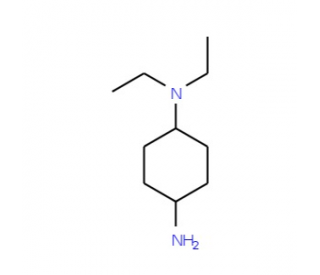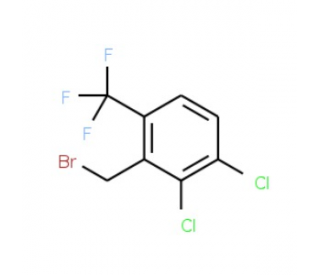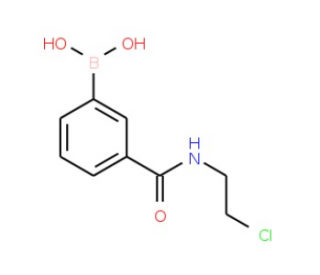详细说明
Purity
>97%, by SDS-PAGE under reducing conditions and visualized by silver stain
Endotoxin Level
<0.10 EU per 1 μg of the protein by the LAL method.
Activity
Measured by its binding ability in a functional ELISA. Immobilized rhOBCAM at 1 µg/mL (100 µL/well) can bind rhLAMP/Fc Chimera with a linear range of 0.015-1 µg/mL.
Source
Mouse myeloma cell line, NS0-derived Gly28-Asn322, with a C-terminal 6-His tag
Accession #
N-terminal Sequence
AnalysisGly28
Structure / Form
Monomer
Predicted Molecular Mass
33.2 kDa
SDS-PAGE
55-58 kDa, reducing conditions
2777-CM |
| |
Formulation Lyophilized from a 0.2 μm filtered solution in PBS. | ||
Reconstitution Reconstitute at 100 μg/mL in sterile PBS. | ||
Shipping The product is shipped at ambient temperature. Upon receipt, store it immediately at the temperature recommended below. | ||
Stability & Storage: Use a manual defrost freezer and avoid repeated freeze-thaw cycles.
|
Background: OBCAM/OPCML
OBCAM (Opioid-binding cell adhesion molecule, also known as OPCML) is a member of the IgLON family of cell adhesion molecules. All IgLONs are GPI-linked glycoproteins, contain three C2 type Ig-like domains, and are expressed in cerebral cortex and hippocampus (1, 2). The name IgLON derives from family membership in the Ig superfamily, and the first letters of the names of group’s molecules; LAMP, OBCAM, and Neurotrimin. Recently, membership in the group has been expanded by one with the addition of Kilon (Kindred of IgLON), and members of this group are now often referred to Diglons, based on the dimerizing nature of the IgLONs (1, 2). Human OBCAM is synthesized as a 345 amino acid (aa) preproprecursor that contains a 27 aa signal sequence, a 295 aa mature region, and a C-terminal 23 aa prosegment (3). The prosegment is cleaved to generate the GPI-link. OBCAM varies in molecular weight, ranging from 46 kDa to 65 kDa (4 - 6). The difference is not due to alternate splicing but to differential glycosylation (6). Although it is not unusual for GPI-linked proteins to be solubilized, to date there is no evidence that OBCAM functions as a soluble molecule (1). Mature human OBCAM is 98%, 99%, and 98% aa identical to mature bovine, rat and mouse OBCAM, respectively. OBCAM has limited expression, occuring principally in telencephalon and ovarian epithelium (7, 8). In brain, it is found associated with dendrites and post-synaptic membranes, where it may maintain synaptic architecture (1, 5). In ovary, it has been suggested to be a tumor-suppressor factor (8). The receptor(s) for OBCAM appears to be other members of the IgLON family, and a dimer is the functional unit. While neurotrimin appears to function as both a homodimer and heterodimer, all other family members (including OBCAM) show a preference for heterodimerization. OBCAM forms strong trans (between cells) heterodimers with LAMP, and modest heterodimers with Neurotrimin. There is hardly any binding with itself. Kilon likely binds OBCAM, but this interaction is not well studied (1). OBCAM heterodimers apparently bind to almost all possible IgLON heterodimer combinations on other cells. In cis (same cell), OBCAM also binds to LAMP and Neurotrimin (2).
References:
Miyata, S. et al. (2000) Neuroscience 117:645.
Reed, J. et al. (2004) J. Cell Sci. 117:3961.
Shark, K.B. and N.M. Lee (1995) Gene 155:213.
Wick, M.J. et al. (1996) Mol. Brain Res. 36:322.
Miyata, S. (2000) J. Comp. Neurol. 242:74.
Hachisuka, A. et al. (1996) Neurochem. Int. 28:373.
Miyata, S. et al. (2003) Brain Res. 979:129.
Sellar, G.C. et al. (2003) Nat. Genet. 34:337.
Long Name:
Opioid-binding Cell Adhesion Molecule/Opioid Binding Protein/Cell Adhesion Molecule-like
Entrez Gene IDs:
4978 (Human)
Alternate Names:
IgLON family member 1; IGLON1opioid-binding protein/cell adhesion molecule-like; OBCAM; OBCAMopiate binding-cell adhesion molecule; OPCM; OPCML; opioid binding protein/cell adhesion molecule-like preprotein; opioid binding protein/cell adhesion molecule-like; Opioid-binding cell adhesion molecule; opioid-binding protein/cell adhesion molecule










 粤公网安备44196802000105号
粤公网安备44196802000105号